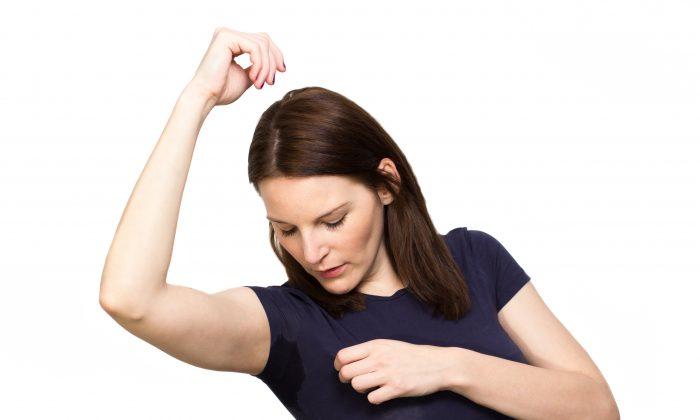It’s no secret that everyone sweats, but 3 percent of the population suffers from excessive sweating, a condition called hyperhidrosis. Most of them don’t even know they have it, but they are keenly aware of how much they sweat.
Hyperhidrosis can interfere with a person’s quality of life and cause embarrassment in the workplace, at social functions, and in intimate settings.
Sweating is an adaptive response to rising body temperatures and is the body’s mechanism for cooling off. Doctors don’t know why some people have an overactive sweat system, but this is one of those cases where too much of a good thing, isn’t good anymore.
Hyperhidrosis may be generalized, affecting the entire body, or localized, affecting specific body sites such as the armpits or hands.
In 90 percent of the cases, the cause is an inherent problem with the sweat system itself, and in the remaining 10 percent, sweating is the result of an unrelated medical problem (for example, diabetes, hyperthyroidism, anxiety disorder, menopause, tuberculosis) or as a side effect from medication such as tricyclic antidepressants, iron, or zinc supplements.
If doctors can’t find a related medical problem, this is called primary focal hyperhidrosis. If you have two or more of the following symptoms, then you probably have primary focal hyperhidrosis:
- Sweating occurs on both sides of the body almost equally.
- Sweating impairs your daily life.
- You have at least one episode of excessive sweating weekly.
- The problem started before you turned 25.
- Some family members suffer from excessive sweating.
- You stop sweating when you’re asleep.
Treatments for Primary Hyperhidrosis
Antiperspirants. These are the first-line treatment for hyperhidrosis and contain aluminum salt. When sweat mixes with the antiperspirant on the surface of the skin and in the sweat ducts below, a chemical reaction takes place that forms a salt plug. There are both over-the-counter and prescription antiperspirants, and they differ based on the strength of the aluminum active ingredient.
Antiperspirants should be applied to dry skin before bedtime. The best way to apply them is as follows: Clean the underarm skin gently with soap and water in the shower and pat dry. Use a blow dryer on cool setting to get the area completely dry. Finally, apply the antiperspirant.
If you tried antiperspirants and failed with them, then you have three major options remaining.
Oral Medications. These drugs are called “anti-cholinergics” and include glycopyrrolate, oxybutynin, and others, and they work by blocking the chemical messenger acetylcholine from reaching receptors on the sweat glands.
Because acetylcholine receptors are located in other areas on the body, there can be a range of side effects. Therefore, these drugs are best only for young, healthy patients who have already tried other therapies that failed them.
Botox Injections. These go directly into the armpit and reduce sweat for approximately six months. The mechanism by which Botox reduces sweating is by preventing the release of the chemical messenger acetylcholine from the nerves that communicate with the sweat glands.
The procedure takes less than 10 minutes and involves a series of injections using small needles. There may be temporary discomfort and bruising from the injection itself; however, in the hands, there is a small risk of hand muscle weakness, as Botox is a muscle relaxant. Therefore, people who rely on their hands for their work, such as musicians and athletes, may not be the best candidates.
MiraDry. For those seeking a more permanent solution, miraDry is an FDA-approved, 90-minute office procedure that uses targeted microwave energy to permanently shut down sweat glands in the armpit area only.
The procedure consists of two parts: First, the underarm skin is numbed with localized anesthesia by the doctor. Then a small hand piece is placed on the skin. The patient feels a gentle suction, and the heat is delivered. Results are noticeable within 24–48 hours. There are no activity restrictions after the treatment; however, you should plan to rest for 12–24 hours.
Main side effects include temporary bruising, swelling, and discomfort, which last on average one week.
The miraDry procedure uses a light, handheld device that is placed directly on the skin and moved across the entire area, one pulse at a time.
Both men and women respond equally well to all sweat treatments, including miraDry. Men especially love the feeling of being dry.
Dr. Estee Williams is a board-certified dermatologist with offices on the Upper East Side. She is also the creator of The Runner’s Lift, the first and only anti-aging cosmetic treatment for runners and other hardcore athletes.

